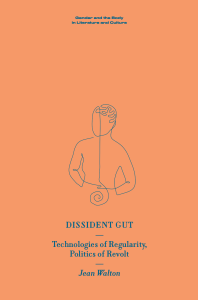Benjamin Hulett //
Xine Yao’s Disaffected: The Cultural Politics of Unfeeling in Nineteenth-Century America (2021) is a significant contribution to “an ongoing so-called antisocial turn in affect studies,” a meticulous literary and speculative study of race and queerness, and a practical guide for “marginalized scholars struggling to survive in the academy” (10, 28) Through its scope, attentiveness, opacities, deliberate detachments, and imagination, Disaffected demonstrates how “unfeeling” can occasion life-saving practices of care. Yao’s book “lingers with” nineteenth-century American writers who play within and against sentimentalism’s generic conventions to explore their tactics for disengaging from white sentimentalism’s false promise of universal feeling (28). As Yao compellingly demonstrates, quotidian refusals of white feeling harbor “insurgent potential” for “feeling otherwise,” which then becomes a condition for “imagining otherwise” (12).
Sentimentalism, in Yao’s account, privileges sympathy as the proper way to organize feelings and achieve social progress. This investment in the exchange of universal expressions pervades nineteenth-century aesthetic, legal, and scientific practices. However, as Yao argues, sentimentalism’s mobilization of sympathy is predicated on racialized and gendered hierarchies of what Denise Ferriera da Silva calls “affectability,” or the “condition of being subject” to so-called natural forces and power (1). In this context, sympathy fortifies a liberal politics of recognition by excluding feelings that are illegible to the “sentimental mission” of white heteropatriarchy, and thus register merely as “unfeeling” (174). As an apparatus of what Kyla Schuller has called “the biopolitics of feeling,” sentimentalism mediates who deserves a claim to true humanity and ethical regard. Against this fatal regulation of feeling, disaffection — unfeeling and disloyalty to power — becomes a way to create bonds between marginalized people, especially queer women of color: “The anti-social declaration ‘I don’t care’ meets ‘we don’t care’: a mode of self-care grows into collective care” (210).
Displacing Bartleby as the paradigmatic figure of inscrutable insensitivity in recent scholarship, Yao’s first chapter turns to another of Herman Melville’s stories, Benito Cereno, to study Babo’s “unsympathetic Blackness.” To the sentimental Captain Delano, Babo initially appears to be the loyal, enslaved attendant to the titular Captain Cereno. In reality, Babo dissimulates sympathetic affectability so that his orchestration of a slave revolt eludes the notice of Delano. According to Yao, Delano’s form of racism is “justified by contemporary science and law but naturalized by love, not hate” (66). Yao turns their attention in the second chapter to the “transformative power of unsympathetic Blackness” in Martin Delany’s Blake; or the Huts of Africa (83). Delany’s claim that he “felt somewhat like [an] Indian” becomes the impetus for imagining a transnational Black-Indigenous coalition in this unfinished novel. Blake, the protagonist, attunes himself toward cosmologies and ecologies beyond the capture of race science. Subverting some of the supposed grounds of Black-Indigenous divisions, Blake comes to acknowledge the Black diaspora’s “deep relationships to land” and comes to “respect the survivance of the dispossessed Indigenous diaspora” (77). Delany’s “speculative project of radical world making,” however, is limited by his disregard towards Black and Native women in the novel, despite their central role in the cultivation of actual revolutionary practices (78).
The next two chapters consider women’s emergent roles as medical professionals following the Civil War. As Yao explains, even though the first white women doctors were sometimes hearlded as embodiments of the New Woman, they were often accused of “unsexing themselves” in the pursuit of professional medical careers (115). Yao repurposes the pathologized state of “frigidity” — a nineteenth-century medical condition akin to hysteria — to examine the “queerly detached” agency of characters in a sub-genre of women doctor’s novels (by Howell, Phelps, Jewett, and Meyers), alongside publications by the first professional white women physicians. While frigidity disrupts heteronormative conventions of sentimentalism, it ultimately remains attached to colonial/white sympathies.
Next, Yao foregoes routine scholarly discussions of the subjection of Black women in nineteenth-century medical experiments to disclose “countergeneaologies” of Black women in medicine, notably through Frances Ellen Watkins Harper’s Iola Leroy and the writings of the first professional Black women doctors in the US, Rebecca Lee Davis Crumpler and Rebecca J. Cole. Yao draws on Ann DuCille’s concept of “passionlessness” to argue that these Black women use tactics of dissemblance and withholding to defy characterizations and uses of Black women as excessively affectable. Yao’s speculative approach allows her to exceed the limits of their fictional and nonfictional archive to “recover” these modes of unfeeling that “had to be suspended for the sake of survival” in their own day and everydayness (16)
In the final chapter, Yao takes turn of the century criticism that Sui Sin Far’s Chinese characters were “hard to read” as an invitation to reassess Far as a writer who withholds as much as she discloses when representing the lives of Chinese immigrants. Yao claims that Far repurposes the stereotype of “Oriental inscrutability” (used to pathologize, criminalize, and fetishize Chinese immigrants in the wake of the 1875 Page and 1883 Chinese Exclusion Acts) by relating it to the Chinese conception of the face (177). Untranslatable, this Chinese understanding of the face indexes a range of “inexpressive expressions” that undermine the “colonial ruse of universal true feeling” (184). Yao discloses early in her book that there are “parallels” between their life and Far’s, and makes some of these similarities explicit in her coda, “Notes Toward a Disaffected Manifesto Beyond Survival.” In this astonishing finale, Yao urges readers to linger with unfeeling: “Acknowledge” but then “decenter your hurt feelings as a starting point for redressing the affective biopolitical hierarchy” (210).
Disaffected persuasively argues that both the dynamics of white sympathy and the “cross-racial counterintimacies” that undermine its universality continue into the present (73). From the opening pages, for instance, Yao takes affect studies to task for its frequent failure to engage with scholars of color who have long written about affect and unfeeling in various contexts. Rather than always affirming “attachments and porousness,” Yao stresses “the affective importance of detachment and boundaries” (28). This insight is a lesson for scholarship in the health humanities, too, which often is enlisted to remedy the structural failings of professional medicine with individuated empathy at the expense of what Éduoard Glissant calls “the right to opacity” (28). Xine Yao’s Disaffected is a remarkable achievement that asks readers for “reciprocity” in the “mutual, uneven process of knowledge-making, meaning-making, community-building” that emerges from the withholdings and disclosures of unfeeling (ix).
Image: Duke University Press




